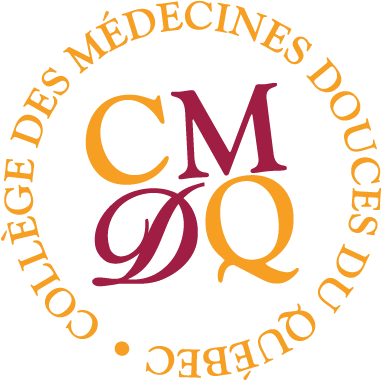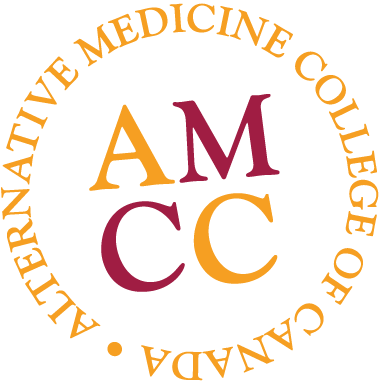Today let’s review an underestimated organ: the tongue. You will find in this small article an overview of information on this subject contained in the various courses of the college of alternative medicine.
Take the Road Jack: the Different Routes, including that of the Tongue
- General drug route
The general route is the most frequently used route. The active agent circulates throughout the body via the bloodstream. There are two possible routes to enter the bloodstream.
– By digestion (enteral route): the drug is swallowed, dissolved in the stomach, then absorbed through the intestine and released into the blood.
Related routes are the lingual route (the drug is placed under the tongue and absorbed through neighboring veins),
– the rectal route (the rectal mucosa absorbs substances introduced by a suppository or an enema), parenteral (subcutaneous, intramuscular, intravenous or intracardiac routes).
The Lingual Way
The mucous membrane of the mouth is filled with fine capillaries and saliva (in a basic environment) which helps retain trace elements in the form of catalytic ions until they pass into the blood stream without breaking down. This mode of direct assimilation under the tongue optimizes the supply of trace elements by allowing them to reach the hormonal command centers which will then redirect the information to the appropriate organs, without encountering obstacles.
The sublingual glands are located under the tongue and secrete 5% of total saliva.
Warning Signs
Our body sends us signals if something is wrong. He’s nice like that. And learning to recognize them in order to eliminate the causes of the disease and control your health … it’s a little effort we can afford.
Each person has different signs of toxaemia than another: you should not be jealous of other people’s illnesses. Moreover, whatever the symptoms, toxemia can be corrected. Secret: all tissues and organs in the body can regenerate and detoxify. Here are the main signs of a toxic state (there are particular signs in the morning and others in the afternoon.) We have listed those in the morning because the language is concerned (this was our article subject ):
- Sour or salty taste in the mouth
- Mucus in the throat
- The tongue is heavy and coated.
- Eyes are dark and full of secretions
- Skin is colorless and the features are drawn
- Nostrils are full of mucus
- Ears are full of wax
- Unpleasant body odor
- Need to sleep more
- Feeling of heaviness
Detox objective: the Pink Tongue
Normally, the tongue should have a pinkish tinge. If the pink of the tongue is homogeneous, it is often a sign of good health. But this simple color is not enough. Thus, when the tongue presents a thin whitish layer, this indicates a lack of energy, a tendency to asthenia. Usually the associated symptoms are poor appetite, profuse sweating and this is commonly seen in people under stress. With a thick white layer and swollen tongue, one thinks more of digestive problems and edema problems. If, in addition, the tongue is pale, you may be in the presence of an infection or a vitamin or mineral deficiency or even anemia.
When creating a health record for someone (as in our clinical case studies # 820) take the time to examine the eyes, nails and tongue.
A Detox Means: Fasting
Preventive fasting allows us to improve our quality of life and prevents disease or degeneration. The goal: a pink tongue and scented breath, a sign that the body is completely cleansed and regenerated. Preventive fasting can last from a few days to a few weeks, depending on the level of toxemia in the body and the goal you are aiming for.
The first step in fasting is a cleansing of toxins and dead matter lodged in all the organs. The kidneys cleanse, the digestive tract empties, the tissues are relieved of edema, and the airways open. These cleansing operations cause typical symptoms to appear, such as increased sensitivity of the kidneys and foul-smelling urine, belching, gas or diarrhea, reduced swelling in the legs, face and stomach, as well as bitter breath. Body odors are pungent; the tongue is very white and the nostrils are full. Residual waste from old inflamed tissue is drained and permanently eliminated.
The tongue becomes less coated during the second week. However, it coats for a few days while the body orchestrates an intense effort of elimination, until the elimination of wastes is almost complete. The fourteen-day fast is indicated for people in their forties who want to start over and prolong their youth.
Please note, this information is taken from our Metabolism and Nutrition # 343 course and should be studied in context before being put into practice.
Tongue in Chinese Medicine
As you know (or not) we have a whole section in Chinese medicine specialty. In our # EN500 bioenergetic program, we learn exciting things like:
language = element of fire!
Did you only know? Fire is also: joy, heat, red (well, we could have guessed it), summer, the heart, growth …
Let us now move on to the symbolism of the language, before tackling therapy.
The opening of the Heart is on the Tongue
The Chinese say that the tongue is the bud of the heart.
Indeed, the pathologies of the heart are manifested in the tongue …
Moreover, a branch of the heart meridian connects this organ to the tongue.
Therefore, when the blood in the heart is insufficient, the texture of the tongue is clear and white.
When there is stagnation of blood in the heart, the tongue turns dark red, sometimes with bruises or dark spots.
If the heat penetrates the lining of the heart or if the phlegm blocks the openings of the heart, the tongue is stiff and it is difficult to speak.
Language represents both spoken and unspoken words. An individual’s “mother tongue” also ties it to a specific country and culture.
Difficulty, anger, or unexpressed feelings can lead to cracks in the tongue or glossitis. We’ll talk about glossitis later.
Tongue and Meridians
A meridian is a path of energy in the body, like we could say a road or a highway. There are quite a few of them and they allow the organs to be linked together (energetically of course).
For example, in Chinese medicine, if there is pain at the base of the tongue, it is a sign of insufficient spleen-pancreas meridian. On the other hand, a dry tongue, accompanied by thirst, is a sign of excess in the kidney meridian.
A dark red tongue is a sign of a deficiency in Qi. Zong Qi is the main energy in Chinese medicine. Nice to meet you.
Red, ulcerated tongue would mean fire in the excess heart meridian that travels through the small intestine – or vice versa, heat in the small intestine that travels up the meridian, warms the heart and causes anxiety and ulcerated tongue. We can also find a yellow coating on the tongue: possibly a sign of an energy blockage in the small intestine.
If the tongue is thick with a white coating, this would be a sign of hot, cold, wetness in the spleen caused by the presence of pathogens. Other signs include headache and oliguria (producing abnormally small amounts of urine.)
A thick yellow coating on the tongue is a symptom of gallbladder void, as are:
- Dizziness, bitter taste in the mouth, nausea, vomiting
- Irritation, inability to remain calm, insomnia, heart palpitations, fear
- Chest oppressed, long sighs
- Slippery and cordiform pulse.
Tongue and Acidosis
The back part of the tongue is mushy = a potential sign that the body is suffering from chronic tissue acidosis. There are of course other signs to be aware of:
- Morning fatigue
- disturbed sleep between 1:00 a.m. and 3:00 a.m.
- Regurgitation and bitterness (pyrosis)
- Disturbed appetite, bulimia
- Constipation
- Frequent migraines
- Oily skin, especially on the face
- Morning breath
- Hands are cold and wet
- Profuse sweating of the feet, cold sweats
- Sensitive to cold
- Muscle aches
- Chronic bronchitis and mucus formation
Tongue and Iron
- Anemia
- Slow growth
- Painful periods
- Weak muscles
- Dry skin
- Itches
On the other hand, a white coated tongue is a sign of poor functioning of the liver and gallbladder. Other symptoms include:
- Intolerance to certain foods, especially fatty foods such as eggs, cream, etc.
- Nausea, dizziness
- Migraine after meals
- Bloating, gas build-up after meals
- Heaviness, pain and a tingling sensation near the liver.
Tongue and Vitamins
Painful, red and smooth tongue is one of the symptoms of vitamin B2 deficiency. Other symptoms of vitamin B2 deficiency include:
- Cracks and redness at the corners of the mouth
- Light sensitivity
- Eyelid redness
- Corneal redness
- Lesions on the mucous membranes of the mouth
- Rashes
- Hair loss
- Cataracts
A red, smooth tongue is also a symptom of vitamin B9 deficiency. Someone who does not have enough folic acid will also show the following signs:
- Anemia
- Weightloss
- Diarrhea
- Tired
- Frequent infections
- Irritability
And in the most serious cases: - Mental problems
- Epilepsy
- Excessive depression
Glossitis
One symptom of vitamin B6 deficiency is inflammation of the tongue (glossitis). Severe vitamin B6 deficiencies are rare in Western countries. It is associated with the following other symptoms: irritability, depression, confusion, seborrheic dermatitis and inflammation of the corners of the mouth.
A pale, smooth tongue can be caused by atrophic glossitis, which can occur with iron deficiency or vitamin B12 deficiency.
Glossitis is also a symptom of celiac disease (resulting from severe intolerance to the gluten gliadin found in wheat). The symptoms of this disease are numerous and sometimes associated:
- Oily diarrhea (steatorrhea)
- Asthenia (fatigue),
- personality disorders
- Weightloss
- Anorexia (loss of appetite)
- Abdominal pain
- Abdominal bloating
- Bouts of nausea, vomiting
- Tetany
- Bone pain
- Edemas
- Skin pigmentation
- mouth aphtha
- anemia.




Leave a Reply